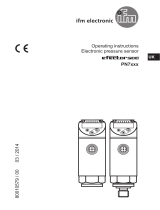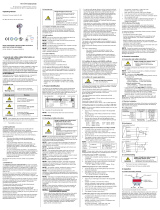
2
Contents
1 Preliminary note ���������������������������������������������������������������������������������������������������3
1�1 Explanation of symbols ����������������������������������������������������������������������������������3
2 Safety instructions �����������������������������������������������������������������������������������������������4
3 Functions and features ����������������������������������������������������������������������������������������4
3�1 Applications ���������������������������������������������������������������������������������������������������5
3�2 Restriction of the application area �����������������������������������������������������������������7
4 Function ���������������������������������������������������������������������������������������������������������������7
4�1 Measuring principle ���������������������������������������������������������������������������������������7
4�2 Other features of the unit �������������������������������������������������������������������������������8
4�3 Application examples �������������������������������������������������������������������������������������8
4�3�1 Application examples for unit types with short probe ����������������������������8
4�3�2 Application examples for unit types with long probe �����������������������������9
4�3�3 Application example installation in existing tuning fork adapters ��������10
5 Installation���������������������������������������������������������������������������������������������������������� 11
5�1 Installation location / environment ��������������������������������������������������������������� 11
5�2 Installation process ��������������������������������������������������������������������������������������12
5�2�1 Installation LMT1x0, LMT1x1 and LMT1x2 ����������������������������������������12
5�2�2 Installation LMT1x4 and LMT1x5 �������������������������������������������������������13
5�2�3 Installation LMT2x2 and LMT3x2 in existing tuning fork adapters ������14
5�3 Notes on 3A compliant installation ���������������������������������������������������������������15
5�4 Note on the use in accordance with EHEDG �����������������������������������������������15
6 Electrical connection ������������������������������������������������������������������������������������������16
7 Interfaces �����������������������������������������������������������������������������������������������������������17
7�1 IO-Link communication interface �����������������������������������������������������������������17
8 Parameter setting ����������������������������������������������������������������������������������������������17
8�1 Parameter setting via PC and IO-Link interface ������������������������������������������18
8�2 Parameter setting via the memory plug ������������������������������������������������������� 18
8�3 Parameter setting during operation �������������������������������������������������������������18
8�4 Parameters: �������������������������������������������������������������������������������������������������19
8�5 System commands: �������������������������������������������������������������������������������������20
8�6 Unit locking / data storage ���������������������������������������������������������������������������20
8�7 Full adjustment via IO-Link ��������������������������������������������������������������������������20
8�8 Parameter setting via the teach input ����������������������������������������������������������21





















